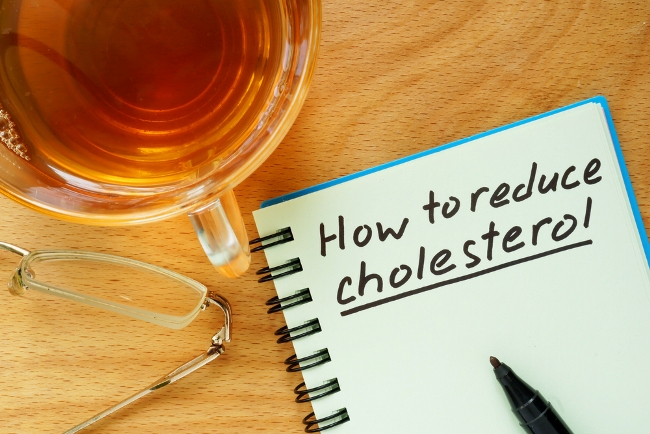Maybe your doctor has told you that your cholesterol’s too high. Or you’ve seen commercials on TV for high cholesterol medications. But how much do you actually know about cholesterol?
Well, first things first: Cholesterol isn’t a bad thing. Cholesterol, a type of fat, is a waxy substance produced by and used by the body to help in a number of important functions, including the making of hormones, digestion and the building of the body’s cells.
Here are four other facts about cholesterol:
There are both good and bad types of cholesterol.
Too much of the bad and not enough of the good can put you at higher risk for stroke and heart disease.
- Low-density lipoprotein (LDL) is often called “bad” cholesterol. This type of cholesterol contributes to the formation of plaque in the arteries. Too much LDL can lead to atherosclerosis or peripheral artery disease.
- High-density lipoprotein (HDL) is the good type of cholesterol – some people remember this by learning that HDL is the “happy” cholesterol. HDL cholesterol helps remove bad cholesterol from the arteries and carries it back to the liver, where it is passed out of the body.
- Triglycerides are used to store excess energy from the foods you eat. High levels of triglycerides, though, are associated with atherosclerosis.
Too much bad cholesterol can lead to clots.
Excess cholesterol forms into plaque on the artery walls, which makes it more difficult for blood to circulate.
This plaque can also lead to blood clots. If a clot forms in an artery that feeds the heart, it can cause a heart attack. If a clot forms in an artery that feeds the brain, it can cause a stroke.
Dietary cholesterol isn’t as bad as once thought.
In years past, doctors and other medical experts often recommended against eating foods high in dietary cholesterol, such as eggs or shrimp.
In 2015, though, an advisory panel indicated that you shouldn’t worry as much about the cholesterol in your food. Instead, limit the amount of saturated and trans fats in the foods you eat.
Saturated fats come from animal products, including beef, butter, cheese and other dairy products, as well as from certain plant products, such as coconut or palm oils.
Trans fats are typically found in fried and baked goods — and may be listed on the nutrition label as “partially hydrogenated oils.”
Balance out your fat intake with healthy fats, including polyunsaturated and monounsaturated fats, which are found in fatty fish, avocados, olives and nuts.
You can largely prevent high cholesterol.
According to the Centers for Disease Control and Prevention, more than 102 million American adults have high cholesterol, including more than 35 million with dangerously high levels. But you can take steps to keep your cholesterol in the healthy range.
Follow the basics of a heart-healthy lifestyle:
- Eat a diet that emphasizes fruits and vegetables, whole grains, low-fat dairy, and lean proteins.
- Limit your consumption of red meats, added sugar and sodium.
- Aim to eat at least two servings each week of fatty fish, which contain high levels of omega-3 fatty acids.
- Get at least 30 minutes of moderate physical activity on most days of the week or more strenuous activity on at least three days.
- Don’t smoke, and avoid exposure to secondhand smoke.
The American Heart Association recommends most American adults age 20 and older have their cholesterol levels checked at least every four to six years as part of a regular physical. Have you had your check up? Find a doctor here.







